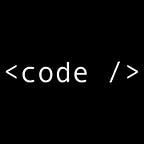Efficient Frontier & Portfolio Optimization with Python [Part 2/2]
In the first part of this series, we looked at the underpinnings of Modern Portfolio Theory and generated an Efficient Frontier with the help of Monte Carlo Simulation. This post concludes the series by looking at the concept of portfolio optimization.
50,000 portfolios with different combinations of weights generated different expected returns and expected volatility. Each point lying on the line represents an optimal combination of stocks (CenterPoint Energy, Facebook, Walmart, General Electric, Tesla in this case) that maximises the expected return for the given level of risk. If all points on the Efficient Frontier curve are optimal combinations, what is the optimal portfolio among the various optimal combinations? What would even the criteria for choosing this “best of the best” combinations?
William F. Sharpe, another Nobel Prize laureate extended Markowitz’s work which resulted in the infamous Capital Asset Pricing Model (CAPM). This post will not delve into this model now. However, we will utilize one of his contributions (the Sharpe Ratio) as criteria for choosing this “best combination”.
